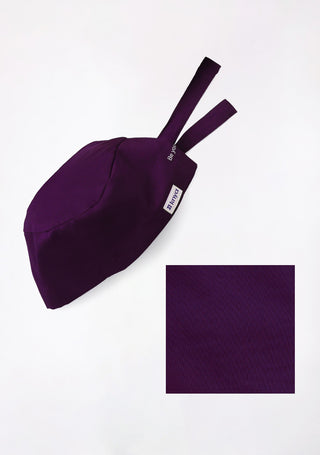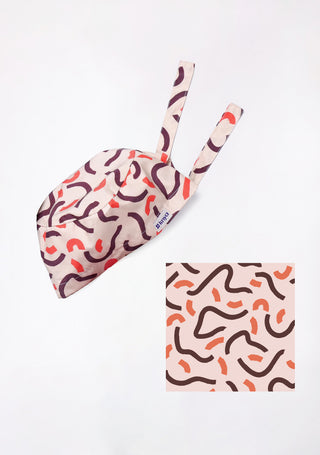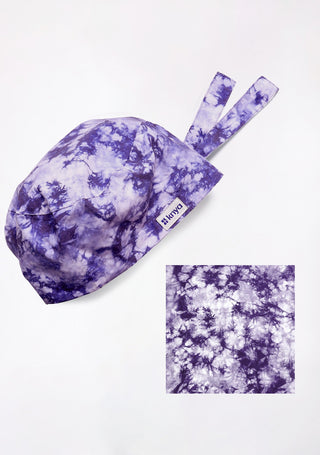A lab coat is more than just a piece of clothing—it’s a daily companion for medical students, doctors, nurses, and healthcare professionals. Whether you’re shadowing in clinicals or managing long hospital shifts, your lab coat is constantly exposed to stains, sweat, and spills. But with proper care, your lab coat can stay crisp, clean, and professional-looking for a long time.
This guide is designed for busy individuals—especially medical students juggling tight schedules and intense clinical exposure. From removing stubborn stains to washing and storing your coat properly, here’s everything you need to know about keeping your Knya lab coat in top shape.
Click here to explore comfortable lab coats and discover our complete collection of comfortable and stylish medical apparel
Why Lab Coat Care Matters?
Lab coats serve both functional and symbolic purposes. They protect against contaminants and bodily fluids while also representing professionalism and trust. A stained or worn-out lab coat can reflect poorly, especially in clinical settings.
Proper maintenance of your lab coat ensures:
-
Professional appearance
-
Hygienic safety
-
Long-term cost efficiency
-
Better durability
Whether you're donning your first Knya lab coat as a student or rotating through departments, learning how to care for it is essential.
Common Lab Coat Stains and How to Remove Them
Lab coats endure a variety of stains. Here's how to deal with the most common ones:
1. Pen Ink
Removal Tip: Dab the stain gently with rubbing alcohol or hand sanitizer using a cotton ball. Do not rub—just blot. Wash immediately in cold water.
2. Blood
Removal Tip: Soak in cold salt water for 30 minutes. Then, scrub with a brush and mild detergent before washing. Never use hot water—it sets the stain.
3. Coffee or Tea
Removal Tip: Blot with a mix of white vinegar and water. Follow up with detergent and lukewarm water.
4. Iodine
Removal Tip: Apply a mix of ammonia and water (1:1) on the stain. Let it sit for 10 minutes and wash as usual.
5. Grease or Oil
Removal Tip: Sprinkle baking soda on the stain, let it sit to absorb the grease, then brush off and wash with warm water and detergent.
Ready to explore our amazing scrubs collection? Browse the best here.
Washing Tips for Your Knya Lab Coat
To ensure your lab coat stays in top condition, follow these simple steps:
1. Separate from Colored Clothes
Always wash your white lab coat separately to avoid color bleeding.
2. Use Gentle Detergents
Harsh detergents can break down fabric over time. Use mild, medical-uniform-friendly detergents.
3. Cold or Warm Wash Only
Hot water can shrink the fabric or set stains. Use cold or warm water cycles instead.
4. Avoid Fabric Softeners
Fabric softeners can reduce absorbency and attract more dirt. Skip them entirely.
5. Skip the Dryer
Air-dry your lab coat whenever possible. High heat can damage fibers and yellow the fabric.
Longevity Hacks for a Crisp, Clean Lab Coat
Making your lab coat last longer doesn’t require extra work—just a few smart habits:
1. Pre-Treat Stains Immediately
The longer you wait, the harder stains become to remove. Keep a small stain-removal pen or wipes in your bag.
2. Use a Dedicated Hanger
Hang your coat after every use. It prevents wrinkles and keeps it ventilated between wears.
3. Have a Backup
Always have at least two Knya lab coats in rotation. This allows time for proper cleaning and drying.
4. Iron or Steam After Wash
To maintain a sharp, professional appearance, iron or steam the coat before each use.
5. Store Away from Direct Sunlight
Prolonged exposure to sunlight can yellow the fabric. Store your coat in a cool, shaded closet.
Practical Advice for Students Juggling Hectic Schedules and Clinical Exposure
Medical students often don’t have time to handwash or steam their lab coats daily. Here are some time-saving hacks just for students:
1. Set a Weekly Wash Day
Choose a fixed day—like Sunday evening—to wash and prep your coat for the week ahead.
2. Use Quick Stain-Remover Wipes
Keep stain wipes in your bag or locker. They can save you from embarrassment after an unexpected spill.
3. Keep a Backup in Your Locker
Accidents happen. Having a second Knya lab coat stashed away can be a lifesaver.
4. Use Wrinkle-Release Spray
If you don’t have time to iron, a good wrinkle-release spray can freshen up your coat in seconds.
5. Dry on a Hanger Overnight
If your coat gets wet during rounds, hang it overnight near a fan. Avoid balled-up dampness in backpacks—it causes odor and mold.
Choosing the Right Lab Coat Makes a Difference
Not all lab coats are created equal. Knya lab coats are designed for medical professionals who value comfort, durability, and easy maintenance. Made from breathable and high-quality fabrics, Knya lab coats resist stains better and withstand frequent washes without losing shape or structure.
Investing in a good-quality lab coat like Knya from the start can save you time, money, and frustration later.
When to Replace Your Lab Coat?
Even with great care, every lab coat has a life span. Here’s when to consider replacing it:
- Permanent yellowing or discoloration
- Torn seams or fraying fabric
- Stains that no longer come out
- Dull or worn-out appearance
A fresh coat isn’t just cosmetic—it shows you take your role seriously. Regularly evaluate your coat and upgrade as needed, especially when heading into new rotations or interviews.
Final Thoughts
Your lab coat is more than just a uniform—it’s your shield, your identity, and often the first thing patients see. Whether you're a first-year student or a resident in action, keeping your lab coat in great condition speaks volumes about your professionalism.
By following these care tips, hacks, and routines, you can extend the life of your Knya lab coat while looking sharp, clean, and ready to take on the day.












